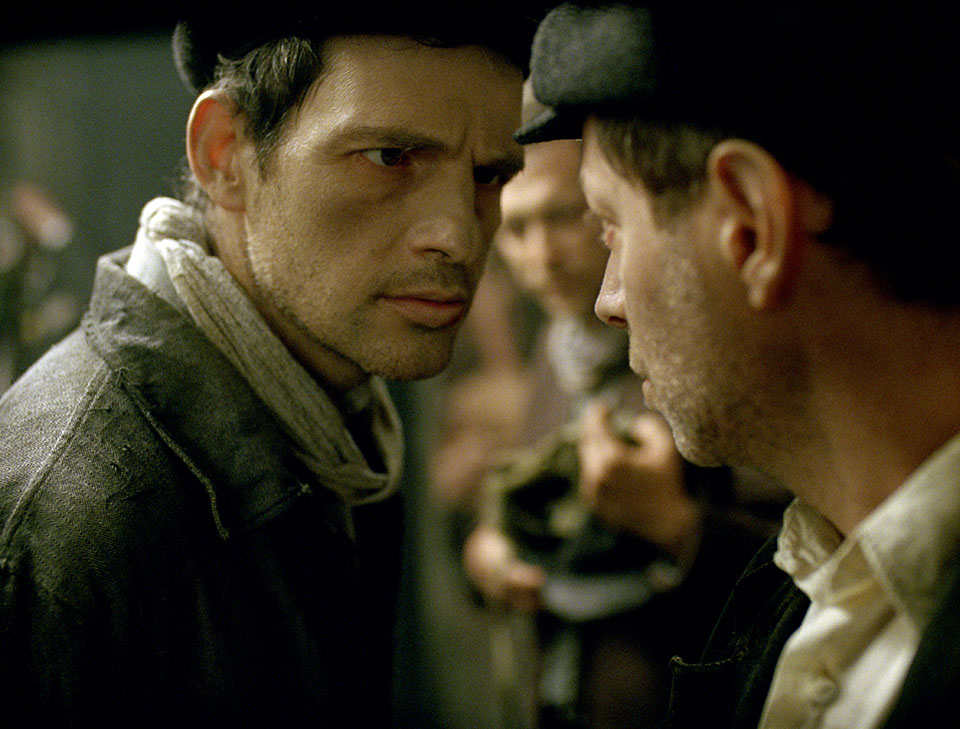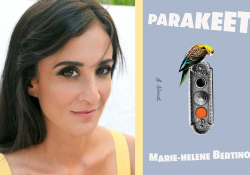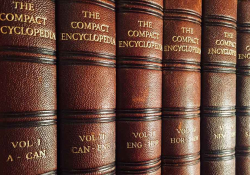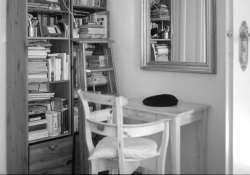Reclaiming the Body: Hitler’s Bathtub, Son of Saul, and Warsaw Uprising

Nominated for a 2016 Best Foreign Language Oscar, Hungary’s Son of Saul has been called “the film to beat.” Here in her review essay, Hungarian writer Zsófia Ban explains the film’s power.
When Lee Miller heard the news of Hitler’s death in May 1945, she was in the Führer’s Munich apartment. She got into his bathtub naked and had the carefully composed image photographed by her colleague, David Scherman. Creating this now-iconic image under the impact of what she had seen in Dachau and Buchenwald, Miller made one of the most radical artistic gestures in contemporary visual culture. She was a photographer and war correspondent, but this impulsive, visceral reaction violated the traditional contract of the photojournalist—it was a foray into the domain of art, when the documentary proved inadequate and unsatisfying. Miller was a striking beauty who had previously modeled for Vogue, and, despite the sudden impulse, she knew exactly what she was doing. She knew that her transgressive gesture was a scandal; she knew that only a scandal with a sensory immediacy could react to the inconceivable scandal of history and European civilization. Washing and cleansing are obviously symbolic acts, but she did more, giving up her external position as witness and putting her own body at stake. The frivolousness of the gesture, a carryover from surrealist humor and playfulness, makes the production even more scandalous—yet another transgression.
Of the five American women photojournalists accredited as correspondents in World War II, Miller created the most radical oeuvre. In this image, she refuses to separate scandal from normality, tragedy from humor, the private from the communal, outside from inside, and nakedness from the nude. She puts her own naked woman’s body into this contaminated, surprisingly intimate space, uncannily coming into contact with an embodiment of masculine evil, familiar yet unfamiliar. Miller essentially stages a sensuous performance of the control over one’s own body, the domesticated principle of habeas corpus, a gesture that reclaims the human dignity of the corpses photographed in the concentration camps on the same day. She strategically reoccupies the territory of the body—private, unsexualized, civic, and female in this case—restoring its rights in its original private space. The bathtub, as an impertinently frivolous object, is also an icon of reclaiming the privacy, culture, and sphere of intimacy destroyed along with people in the concentration camps. Miller sits in the tub in the classic pose of a nude, imitating the small nude sculpture carefully positioned on the bathroom table (while Hitler’s framed photograph in the background is propped against the wall, on the edge of the tub). Her pose, both an ironic and a grave reflection on European civilization, is a historically loaded, surrealist reworking of Marcel Duchamp’s early-twentieth-century avant-garde gestures. Ultimately, it is this transformation that Miller’s photo captures: the subconscious, imaginary world represented in surrealism suddenly turned into a harsh historical reality, almost overnight.
Is it possible for a Holocaust film—a fundamentally visual narrative genre—to deal with experience itself rather than the representation of “events” and circumstances?
If Lee Miller’s photographic performance was an inspired instant response to contemporary historical events, Son of Saul, by Hungarian filmmaker László Nemes Jeles, is a comparably unique and radical undertaking seventy years later, commenting on the possibility of visual and narrative representations of the Holocaust in the wake of countless attempts. It is clear from the film that the director and his crew had immersed themselves in the texts (the corpus) of survivor testimonies, interviews, memoirs, and research with an almost ritual thoroughness. Their own film version is a relentless confrontation with these materials and an ambitious attempt to convert them into experience and knowledge. The stark plot focuses on Saul, who is a member of the Sonderkommando, a special group of inmates in Auschwitz whose task was to collect and cremate the bodies of the victims murdered in the gas chambers, only to be later murdered themselves in the same way. When he witnesses the execution of a boy who miraculously survived the gassing, Saul recognizes him as his son and decides to give him a proper burial at any cost.
Traditional Holocaust films tend to represent the Holocaust from the perspective of a time when it has already been transformed into historical experience. The makers of Son of Saul tried to answer how film could represent the events from within the trauma in a sensory way. Was this even possible? they had to wonder. Could one represent the tornado from within “the eye,” from the ominous void and silence of the interior, abandoning the external position, the distance, and the easily decoded icon of the familiar funnel form? In there, can you actually perceive what it is you are inside of? Is it possible for a Holocaust film—a fundamentally visual narrative genre—to deal with experience itself rather than the representation of “events” and circumstances? Can it convey that individual experience mostly remained a lifelong, unprocessed trauma in the absence of a language to articulate it?
Nemes Jeles does not consider his work a Holocaust film, and this is partly true because it uses none of the film language and narrative conventions of the genre: Son of Saul is not black-and-white, it does not use the narrative arc of transition from normal life into life in the Lager, and finally—most of the time—to survival and witnessing. Yet it is a Holocaust film. It focuses on the essence of the Holocaust, the trauma, the impossibility of processing individual experience. In complete defiance of representational conventions, it strives to convey how sensory experience does not (and, in the interest of survival, cannot) become an emotional experience or, in fact, any kind of shareable experience. The present knowledge of this void, this massive nothing, is very difficult to absorb. This results in the viewers’ frequent complaints about their upsetting inability to “get involved emotionally.” Nemes Jeles takes an enormous risk, of course, with this nearly impossible emotional identification with a protagonist who no longer exists. When the film begins, Saul has already died as a subject, an independently thinking and feeling self: there is no one to identify with. He lives and operates as an organism, does his job as a Jewish member of the Sonderkommando, but the events happening to him are beyond the discursive and do not transform into his experience. Whatever happens to him cannot be reflected on, because there is no suitable set of concepts and feelings, and equally lacking is the minimal distance necessary for reflection or even for an emotional reaction. There is no distance, no view, only the narrow, constantly pouring present, in which—as Imre Kertész writes in Fatelessness—you always have to take a step, and only the next step counts.
For all these reasons and despite them, Nemes Jeles draws a number of radical conclusions. He literally eliminates distance for almost the entire duration of the film: one can see the surroundings in a narrow, claustrophobic frame and shallow depth of field, always from the protagonist Saul’s point of view and close to his body (directly behind his back). In order to represent the state of trauma and the lack of distance and reflection that could yield real experience (and knowledge), Nemes Jeles foregoes the distancing visual language of thought and adopts a chaotic, aural language, focusing on a sense closer to the body, yet without giving up the visual.
While the viewer sees the events in the Auschwitz death camp only in an extremely restricted way, the film combines this with an overwhelming aural tsunami that amplifies the sense of chaos and that, unlike vision, cannot be shut out. Eyes can be closed, but the ears—and especially the nose, according to survivor testimonies—are on permanent duty. At the same time, the film reduces human language to the minimum, to animal grunts and hisses. Unique human voices and “dialogue” have died away in this place. This narrow frame “performs” the limited, individual point of view of Saul until the very last scene, when a Polish peasant boy, who stumbles on the group of escaping inmates, leads us away from them. As we hear the shots that kill Saul and the other men, we are led into a magnificent, dense birch forest, and so the camera—in Mátyás Erdély’s marvelous cinematography—finally inscribes the story into the landscape, making the historical experience organic and present.
Nemes Jeles’s attachment to film and its materiality is an attempt at restoration: the restoration of memory inscribed into tangible material that can be “developed.”
There is something else that shows the significance of matter, both concrete and symbolic, in Son of Saul: Nemes Jeles insisted on shooting the film on 35mm instead of digital. The recorded images leave a visible and tactile trace on the celluloid, so the reel becomes the body (corpus) of the work and of memory. Although the difference is hardly discernible to a lay audience, the physical image that must be developed in a lab presents the physical embodiment of the delayed process of developing memory. Nemes Jeles emphasizes the “magic“ of film developing, and the living and finite quality of grainy celluloid (“how much more do we have?”) as opposed to a more sterile, cleaned-up digital version. Film consists of self-contained still frames that do not combine into motion and coherent narrative sequences without the rotation of the reel (the operation of memory). Nemes Jeles’s attachment to film and its materiality is an attempt at restoration: the restoration of memory inscribed into tangible material that can be “developed.” Its repertoire of senses includes not only sight and hearing but also tactility. It also touches you by being tangible like an object.
In a different way, restoration is the key to interpreting Jan Komasa’s docu-fiction Warsaw Uprising (2014), too. The Bureau of Information and Propaganda of the Polish Home Army assigned two cameramen to cover everyday life during the uprising, recording short slice-of-life scenes in their documentary études. The rolls of film, which were carefully packaged and buried in a cellar and then found in 1946, would languish in various archives until 2014, when the Museum of the Warsaw Uprising commissioned Jan Komasa’s docu-fiction (or docu-restoration) to commemorate the seventieth anniversary of the uprising. His eighty-seven-minute Warsaw Uprising (Powstanie warszawskie) was edited from the original six-hour footage.
Komasa’s film calls attention to the processing of the material, suggesting that only a sustained, active remembering can achieve real restoration in the fields of local and national memory.
Komasa’s innovative techniques in this exceptional film result in a spectacular and bold renewal of the docu-fiction genre: the words and dialogue in the scenes were identified by deaf lip-reading experts and restored through dubbing with additional sound effects, including wartime background noises. Once they repaired and visually stabilized the footage, the filmmakers also attempted to restore the colors. Komasa directly reflects on this restoration process by occasionally inserting a few frames of the grainy black-and-white original, as if to undermine and comment on the illusion of total verisimilitude. An intimate narrow frame and fast cuts make the cameramen’s bodies felt in the environment shown, highlighting the risk of their presence and participation in the events. Their narrative thus unfolds in a first-person plural, in a very personal, visual language of solidarity in pain and in laughter, with an emphasis on “us,” on the strength of civil community. This unique restoration of sounds and colors—the restitution of their “rights”—also aims at a sensory impact to sustain a visceral sense of presence, like a celluloid-based historical reenactment. Komasa’s film calls attention to the processing of the material, suggesting that only a sustained, active remembering can achieve real restoration in the fields of local and national memory.
In Nemes Jeles’s film, Son of Saul, the reclaiming of matter and restitution plays a crucial role in yet another sense, namely in relation to the body. In a place where the principle of habeas corpus (“you should have the body”) is most gravely violated both concretely and metaphorically, where no one has control over his or her body, let alone the bodies of the dead, Saul glimpses the possibility of securing this basic human right. He wants to bury the child as a unique human being. Saul’s decision—the very fact of making any decision at all—is also a restoration of his own humanity, his own rights as a subject, if only temporarily.
It has been endlessly debated whether the boy in the film is actually Saul’s son, as he claims. When a fellow inmate challenges him three times (“You have no son!”), Saul mutters a half-sentence in response: “Not by my wife.” His statement may be true, or it may be a fictive piece of the mosaic of his obsession—and be no less “true” for that. This ambiguity is an asset to the film, even if it was not the director’s original intention. The scripts of a father accidentally finding his son and wanting to bury him and of Saul symbolically adopting the unknown boy seem equally crazy, absurd, and delirious (both practically and metaphorically) in the context of Auschwitz and the Sonderkommando. Yet, since anything would seem that way in this context, either variation can bring one closer to a realistic representation of the situation from within the trauma. In the case of his own son, he can offer the final dignity to the (until then) missing body of a murdered relative (the future), in both a religious and human sense—an act improving the chances of mourning and thereby real (emotional) survival. Burying his own found son is the final task of the father in an act that both literally and metaphorically reinstates the principle of habeas corpus in relation to the child, the father, and Judaism. If the boy is not his son, Saul’s decision may be interpreted as a symbolic adoption, which not only gives a nameless boy a name (an individual story) but makes his body stand for all the missing bodies of the murdered victims.
Burying his own found son is the final task of the father in an act that both literally and metaphorically reinstates the principle of habeas corpus in relation to the child, the father, and Judaism.
This adoption is also a symbol of the process of individual and historical memory, as the buried body (grave) of the son would become a monument to each person whose physical being and future had been destroyed. This symbolic gesture in the film ideally meets the viewers’ gesture of adopting Saul’s story and thereby reclaiming their own stories, their own history.
Translation from the Hungarian
By Katalin Orbán











